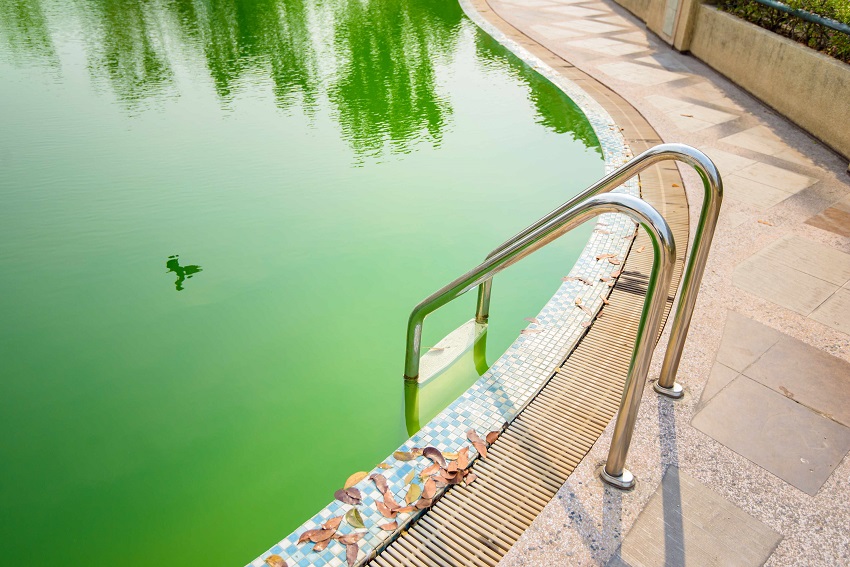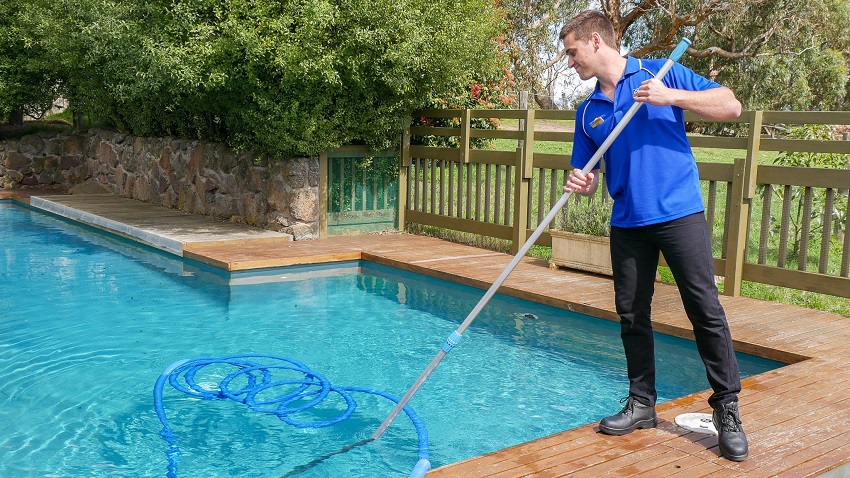Cloudy pool water can be a frustrating sight for any pool owner. Instead of the crystal-clear oasis you envisioned, you’re left with murky, hazy water far from inviting. But why does this happen? In this article, we will explore why is my pool cloudy and provide you with practical steps to restore the clarity and enjoy your pool to the fullest.
A clean and inviting pool is desirable for any homeowner or facility. A cloudy pool, however, can be a source of disappointment and concern. When your pool water appears cloudy or hazy, it indicates that impurities or substances disrupt the water’s clarity. It is crucial to address the issue promptly to maintain a safe and enjoyable swimming environment.
Common Causes of Cloudy Pool Water
Understanding the reasons behind your pool’s cloudy appearance can help you take targeted steps toward resolving the issue. Here are some common culprits:
Imbalanced pH Levels
The pH level of your pool water plays a vital role in its overall quality. When the pH becomes unbalanced, it can lead to cloudy water. A pH level that is too high or too low can affect the effectiveness of sanitizers and hinder water clarity.
High Levels of Dissolved Solids
Excessive dissolved solids like calcium and magnesium can contribute to cloudy pool water. These substances can build up over time and cause the water to appear hazy. This issue is particularly common in areas with hard water.
Insufficient Filtration and Circulation
Proper filtration and circulation are essential for maintaining pool clarity. If your filtration system is not functioning optimally or there is poor water circulation, it can result in cloudy water. Inadequate filtration fails to remove impurities effectively, allowing them to linger in the water.
Algae Growth
Algae can quickly turn a pristine pool into a green or cloudy mess. Algae thrive in warm and poorly maintained pool environments. When algae multiply, they can cloud the water, creating an unsightly appearance.
Presence of Debris and Organic Matter
Leaves, dirt, insects, and other debris can accumulate in your pool, leading to cloudy water. Organic matter provides a food source for bacteria and algae, contributing to cloudiness. Neglecting regular cleaning and maintenance can exacerbate the problem.
Testing and Balancing Pool Water
To address cloudy pool water effectively, starting with testing and balancing the pool’s water chemistry is crucial. Regular water testing ensures the parameters are within the recommended range. Here are the steps to take:
Adjusting pH Levels
Test the pH level of your pool water using a reliable testing kit. If the pH is outside the recommended range (7.2 to 7.6), you will need to adjust it accordingly. Adding pH increaser or pH reducer can help bring the levels back to the ideal range.
Addressing High Levels of Dissolved Solids
If your pool water has high levels of dissolved solids, consider using a water softener or a specialized treatment product designed to reduce hardness. Regularly checking and balancing calcium hardness can help prevent cloudy water caused by excess minerals.
Enhancing Filtration and Circulation
Proper filtration and circulation are vital for maintaining clear pool water. Here’s what you can do:
Cleaning and Backwashing the Filter
Regularly clean and backwash your pool filter to remove trapped debris and contaminants. A clean filter ensures efficient filtration, preventing cloudy water.
Checking and Maintaining the Pump and Skimmer
Inspect the pool pump and skimmer regularly to ensure they are functioning optimally. Any issues with the pump or a clogged skimmer can result in inadequate circulation and cloudiness.
Adding a Pool Clarifier
A pool clarifier is a useful product that helps to coagulate tiny particles in the water, making them easier for the filter to remove. Adding a pool clarifier as per the manufacturer’s instructions can enhance water clarity.
Using a Pool Vacuum
Regularly vacuuming your pool helps remove debris and sediment that settle on the pool floor. This practice is particularly important if your pool has poor circulation or if you’ve recently experienced a heavy storm.
Algae Prevention and Treatment
Algae growth can make your pool water cloudy but can be prevented and treated effectively. Follow these steps:
Proper Sanitization and Chlorination
Maintaining proper sanitizer levels, usually chlorine is crucial to inhibit algae growth. Regularly test and adjust the sanitizer levels to remain within the recommended range.
Algaecide Usage
Algaecides are chemicals specifically designed to prevent or treat algae growth. Use an algaecide that is suitable for your pool type and follow the instructions provided by the manufacturer.
Brushing and Shocking the Pool
Regularly brushing the pool walls and floor can help prevent algae buildup. If you notice signs of algae growth, shock the pool by adding a high dose of chlorine to eradicate the problem.
Removing Debris and Organic Matter
Keeping your pool free from debris and organic matter is crucial for maintaining water clarity. Follow these steps:
Skimming and Netting the Pool Surface
Using a pool skimmer or net removes leaves, bugs, and other debris from the water’s surface. Regular skimming prevents these substances from sinking and causing cloudiness.
Cleaning the Pool Walls and Floor
Brush the pool walls and floor regularly to remove algae or sediment buildup. Pay extra attention to corners, steps, and other hard-to-reach areas.
Vacuuming and Maintaining the Pool Regularly
Invest in a reliable pool vacuum regularly to remove debris and sediment that settles on the pool floor. Following a consistent maintenance routine is crucial for preventing cloudy water.
Additional Tips for Pool Clarity
Here are some additional tips to help you maintain a crystal-clear pool:
Regular Maintenance Routine
Follow a weekly maintenance routine, including testing water chemistry, cleaning filters, and skimming the pool surface. Consistency is key to preventing cloudy water.
Avoiding Overloading the Pool with Chemicals
While proper sanitization is important, it’s equally crucial not to overdo it with chemicals. Excessive chemical use can create imbalances and contribute to water cloudiness. Follow recommended guidelines for chemical dosing.
Using a Pool Cover
Investing in a pool cover can help keep debris out of the pool when it’s not in use. Covering the pool when it’s not in use reduces the risk of contamination and minimizes the need for excessive cleaning.
Seeking Professional Help When Needed
If you’ve tried various troubleshooting steps and your pool water remains persistently cloudy, it may be time to consult a professional pool technician. They can assess the situation and provide expert guidance to clarify your pool.
Conclusion
Maintaining a clear and inviting pool is a responsibility that comes with numerous benefits. By understanding the causes of cloudy pool water and implementing the appropriate measures, you can enjoy a sparkling pool all season long. Regular testing, proper chemical balance, effective filtration, and consistent maintenance are key to preventing and resolving cloudy water issues.
Tags: cloudy pool, pool chemicals, pool cleaning, pool filtration, pool maintenance, pool troubleshooting, pool water, swimming pool, water clarity





Leave a Reply